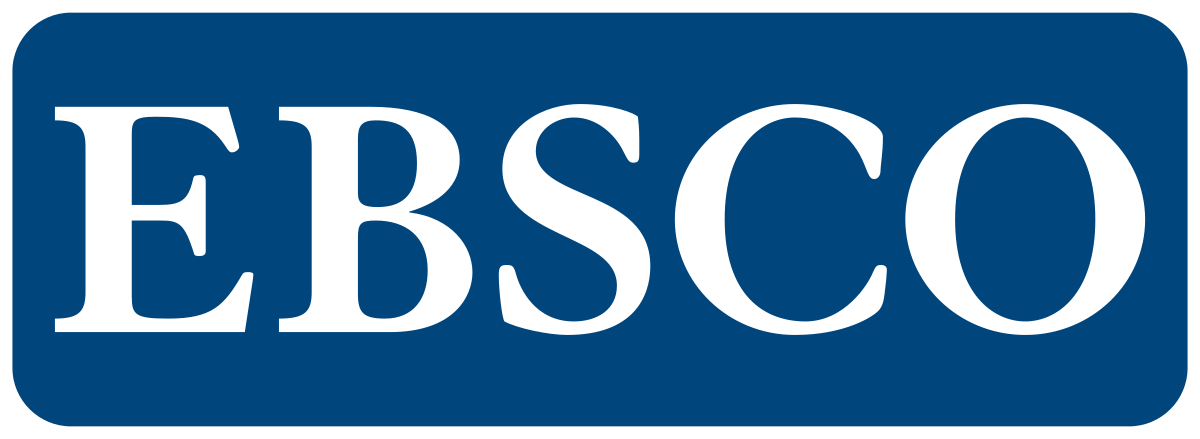Effect of Fungal Bioformulator Concentrate on the Growth and Yield of Corn (Zea mays L.) under Dryland Conditions
DOI:
https://doi.org/10.23960/jtepl.v14i4.1496-1505 Abstract View: 194
Abstract View: 194
Keywords:
Bioformulator, East Lombok, Microorganism, Zea mays LAbstract
The urgency of this research lies in the application of bioformulator fungal concentrate as a renewable product with more economical synthesis costs, utilizing the natural potential of surrounding environment to stimulate the growth of corn in dry land. The primary objective of this study is to increase corn production in in Toya Village, Aikmal District, East Lombok, West Nusa Tenggara (NTB), to meet community needs. The research method used is an experimental method with field trials. This study employs a Randomized Complete Block Design (RCBD) with factorial experiment consisting of four levels of BFK and three levels of variety. Each treatment is repeated three times, resulting in a total of 36 experimental units. The data were analyzed using analysis of variance (ANOVA), and if significant differences are found, the Honestly Significant Difference (HSD) was conducted using test at a significance level of 95%. The application of fungal bioformulator concentrate did not show a significant effect in improving the growth and yield of maize in dryland conditions.
Downloads
References
Abdenaceur, R., Farida, B.-T., Mourad, D., Rima, H., Zahia, O., & Fatma, S.-H. (2022). Effective biofertilizer Trichoderma spp. isolates with enzymatic activity and metabolites enhancing plant growth. International Microbiology, 25(4), 817–829. https://doi.org/10.1007/s10123-022-00263-8
Akhmad, R. (2021). Pola tanam pertanian lahan kering untuk sistem polikultur terintegrasi di Pulau Lombok, Indonesia. Jurnal Pendidikan Geosfer, 6(2), 155–163. https://doi.org/10.24815/jpg.v6i2.23780
Ali, S., Khan, M.J., Anjum, M.M., Khan, G.R., & Ali, N. (2022). Trichoderma harzianum modulates phosphate and micronutrient solubilization in the rhizosphere. Gesunde Pflanzen, 74, 853–862. https://doi.org/10.1007/s10343-022-00643-0
Amir, N., Paridawati, I., & Ayomida, P.N. (2023). Peningkatan pertumbuhan bibit karet (Hevea brasiliensis Muell. Arg) dengan pemberian pupuk nitrogen dan garam dapur (NaCl) di polybag. Klorofil: Jurnal Ilmu-Ilmu Agroteknologi, 18(2), 33–37.
Aninsi, E.I., Basir, M., & Toana, M.R.C. (2024). Karakteristik mikoriza di pertanaman jagung (Zea mays L.). Agrotekbis: Jurnal Ilmu Pertanian, 12(3), 558–566.
Bononi, L., Chiaramonte, J.B., Pansa, C.C., Moitinho, M.A., & Melo, I.S. (2020). Phosphorus-solubilizing Trichoderma spp. from Amazon soils improve soybean plant growth. Scientific Reports, 10, 2858. https://doi.org/10.1038/s41598-020-59793-8
Cahya, J.E., & Herlina, N. (2018). Uji potensi enam varietas jagung manis (Zea mays saccharata Sturt) di dataran rendah Kabupaten Pamekasan. Jurnal Produksi Tanaman, 6(1), 92–100.
Chahyunisa, A., Anhar, A., Advinda, L., & Chatri, M. (2024). Growth of Trichoderma asperellum with the addition of glycerol on rice bran based medium. Serambi Biologi, 9, 8–12.
Choudhary, M., Singh, A., Gupta, M., & Rakshit, S. (2019). Enabling technologies for utilization of maize as a bioenergy feedstock. Biofuels, Bioproducts and Biorefining, 14(2), 402–416. https://doi.org/10.1002/bbb.2060
Damanhuri, D., Widodo, T.W., & Fauzi, A. (2022). Pengaturan keseimbangan nitrogen dan magnesium untuk meningkatkan pertumbuhan dan produksi jagung (Zea mays L.). Jurnal Ilmiah Inovasi, 22(1), 10–15. https://doi.org/10.25047/jii.v22i1.2842
Grzechowiak, M., Sliwiak, J., Link, A., & Ruszkowski, M. (2024). Legume-type glutamate dehydrogenase: Structure, activity, and inhibition studies. International Journal of Biological Macromolecules, 278(2), 134648. https://doi.org/10.1016/j.ijbiomac.2024.134648
Guo, J., Li, X., Wang, Y., Hu, W., Zhang, L., Luo, Z., Xu, H., & Chen, L.-S. (2024). Magnesium deficiency induced leaf chlorosis affects plant growth, mineral concentration and fruit quality in field pomelo trees. Journal of Agriculture and Food Research, 18, 101338. https://doi.org/10.1016/j.jafr.2024.101338
Harahap, F.S., Kurniawan, D., & Susanti, R. (2021). Pemetaan status pH tanah dan C-organik tanah sawah tadah hujan di Kecamatan Panai Tengah Kabupaten Labuhanbatu. Agrosains: Jurnal Penelitian Agronomi, 23(1), 37–42. https://doi.org/10.20961/agsjpa.v23i1.48479
Kane, D.A., Bradford, M.A., Fuller, E., Oldfield, E.E., & Wood, S.A. (2021). Soil organic matter protects US maize yields and lowers crop insurance payouts under drought. Environmental Research Letters, 16(4), 044018. https://doi.org/10.1088/1748-9326/abe492
Kubiak, A., Wolna-Maruwka, A., Pilarska, A.A., Niewiadomska, A., & Piotrowska-Cyplik, A. (2023). Fungi of the Trichoderma genus: Future perspectives of benefits in sustainable agriculture. Applied Sciences, 13(11), 6434. https://doi.org/10.3390/app13116434
Lu, H., Xia, Z., Fu, Y., Wang, Q., Xue, J., & Chu, J. (2020). Response of soil temperature, moisture, and spring maize (Zea mays L.) root/shoot growth to different mulching materials in semi-arid areas of Northwest China. Agronomy, 10(4), 453. https://doi.org/10.3390/agronomy10040453
Mahyuddin., Firman, C.M., & Salam, M. (2023). Analisis pendapatan dan faktor-faktor yang mempengaruhi produksi usahatani jagung hibrida: Sebuah kasus di Kabupaten Soppeng. Agrikultura, 34(3), 483–494.
Msimbira, L.A., & Smith, D.L. (2020). The roles of plant growth promoting microbes in enhancing plant tolerance to acidity and alkalinity stresses. Frontiers in Sustainable Food Systems, 4, 106. https://doi.org/10.3389/fsufs.2020.00106
Negara, I.D.G.J., Wiratama, K., & Merdana, I.N. (2023). Pelatihan pembuatan pupuk organik. Jurnal Masyarakat Mandiri, 7(2), 1083–1094. https://doi.org/10.31764/jmm.v7i2.13220
Permayani, I., Radian, R., & Ramadan, T.H. (2020). Pengaruh beberapa jenis bokashi dan Trichoderma spp. terhadap pertumbuhan dan hasil tanaman jagung manis pada tanah alluvial. Agrovigor: Jurnal Agroekoteknologi, 13(1), 51–59. https://doi.org/10.21107/agrovigor.v13i1.6195
Prasetyo, J., Ginting, D.F., Nurdin, M., & Sudiono, S. (2021). Pengaruh lama asosiasi Trichoderma spp. dengan akar tanaman jagung terhadap penyakit bulai dan pertumbuhan tanaman jagung. Jurnal Agrotek Tropika, 9(3), 513–522. https://doi.org/10.23960/jat.v9i3.5363
Putri, R., Prasetyo, J., Maryono, T., & Dirmawati, S.R. (2022). Pengaruh empat isolat Trichoderma spp. terhadap penyakit bulai dan pertumbuhan tanaman jagung (Zea mays L.). Jurnal Agrotek Tropika, 10(2), 177–185. https://doi.org/10.23960/jat.v10i2.5873
Sadiyah, H. (2023). Model usahatani optimal pada lahan kering beririgasi air tanah di Kabupaten Lombok Timur. Jurnal Agroteksos, 33(1), 26. https://doi.org/10.29303/agroteksos.v33i1.787
Saeri, M., Tafakresnanto, C., Rejekiningrum, P., Hanif, Z., & Putri, R.L. (2023). Development of corn crops in dry land, dry climate using panca management technology in Situbondo, East Java. IOP Conference Series: Earth and Environmental Science, 1253, 012080. https://doi.org/10.1088/1755-1315/1253/1/012080
Silletti, S., DiStasio, E., VanOosten, M.J., Ventorino, V., Pepe, O., Napolitano, M., Marra, R., Woo, S.L., Cirillo, V., & Maggio, A. (2021). Biostimulant activity of Azotobacter chroococcum and Trichoderma harzianum in durum wheat under water and nitrogen deficiency. Agronomy, 11, 380, 1–11. https://doi.org/10.3390/agronomy11020380
Sinay, Y., Kalay, A.M., & LaHabi, M. (2022). The use of Trichoderma harzianum to control the bottom pathogenic fungus of rice seed (Oryza sativa L.) from breeders in Waeapo District, Buru Regency. Agrologia, 11(1), 34-44.
Solihin, E., Sudirja, R., & Kamaludin, N.N. (2019). Aplikasi pupuk kalium dalam meningkatkan pertumbuhan dan hasil tanaman jagung manis (Zea mays L.). Jurnal Agrikultura, 30(2), 40–45.
Sood, M., Kapoor, D., Kumar, V., Sheteiwy, M.S., Ramakrishnan, M., Landi, M., Araniti, F., & Sharma, A. (2020). Trichoderma: The “secrets” of a multitalented biocontrol agent. Plants, 9(6), 762. https://doi.org/10.3390/plants9060762
Sutarman, S., & Prahasti, T. (2022). Uji keragaan Trichoderma sebagai pupuk hayati dalam meningkatkan pertumbuhan dan produksi tanaman bawang merah. Jurnal Agrotek Tropika, 10(3), 421–428. https://doi.org/10.23960/jat.v10i3.5737
Syatrawati., Inderiati, S., & Aurelia, P. (2022). Aplikasi mikrorganisme sebagai agensia promosi pertumbuhan tanaman lada (Piper nigrum Linn). Jurnal Agriovet (Agri-prima), 6(1), 45–53. https://doi.org/10.25047/agriprima.v6i1.437
Tejowulan, R.S., Rohmania, E., & Sutriono, S. (2023). Uji efektivitas biochar plus terhadap pertumbuhan, hasil, dan serapan unsur hara N dan P tanaman jagung manis (Zea mays saccharata Strut.). Journal of Soil Quality and Management, 2(1), 36–48. https://doi.org/10.29303/jsqm.v2i1.61
Wati, H.D., Ekawati, I., & Ratna, P. (2022). Keragaman genetik dan heritabilitas karakter komponen hasil jagung varietas lokal Sumenep. Jurnal Pertanian Cemara, 19(1), 85–94. https://doi.org/10.24929/fp.v19i1.1985
Wu, Y., Liao, W., Dawuda, M.M., Hu, L., & Yu, J. (2019). 5-Aminolevulinic acid (ALA) biosynthetic and metabolic pathways and its role in higher plants: a review. Plant Growth Regulation, 87, 357–374. https://doi.org/10.1007/s10725-018-0463-8
Wulandari, E., Prasetyo, J., Nurdin, M., & Maryono, T. (2022). Pengaruh mefenoksam dan Trichoderma sp. terhadap penyakit bulai dan pertumbuhan tanaman jagung. Jurnal Agrotek Tropika, 10(1), 132–141. https://doi.org/10.23960/jat.v10i1.5601
Downloads
Published
How to Cite
Issue
Section
License
Copyright (c) 2025 Wawan Apzani, Agung Widya Wardhana

This work is licensed under a Creative Commons Attribution-ShareAlike 4.0 International License.
Authors who publish with this journal agree to the following terms:
Authors retain copyright and grant the journal right of first publication with the work simultaneously licensed under a Creative Commons Attribution-ShareAlike 4.0 International Lice that allows others to share the work with an acknowledgement of the work's authorship and initial publication in this journal.
Authors are able to enter into separate, additional contractual arrangements for the non-exclusive distribution of the journal's published version of the work (e.g., post it to an institutional repository or publish it in a book), with an acknowledgement of its initial publication in this journal.
Authors are permitted and encouraged to post their work online (e.g., in institutional repositories or on their website) prior to and during the submission process, as it can lead to productive exchanges, as well as earlier and greater citation of published work (See The Effect of Open Access).
Jurnal Teknik Pertanian Lampung

JTEPL is licensed under a Creative Commons Attribution-ShareAlike 4.0 International License.













